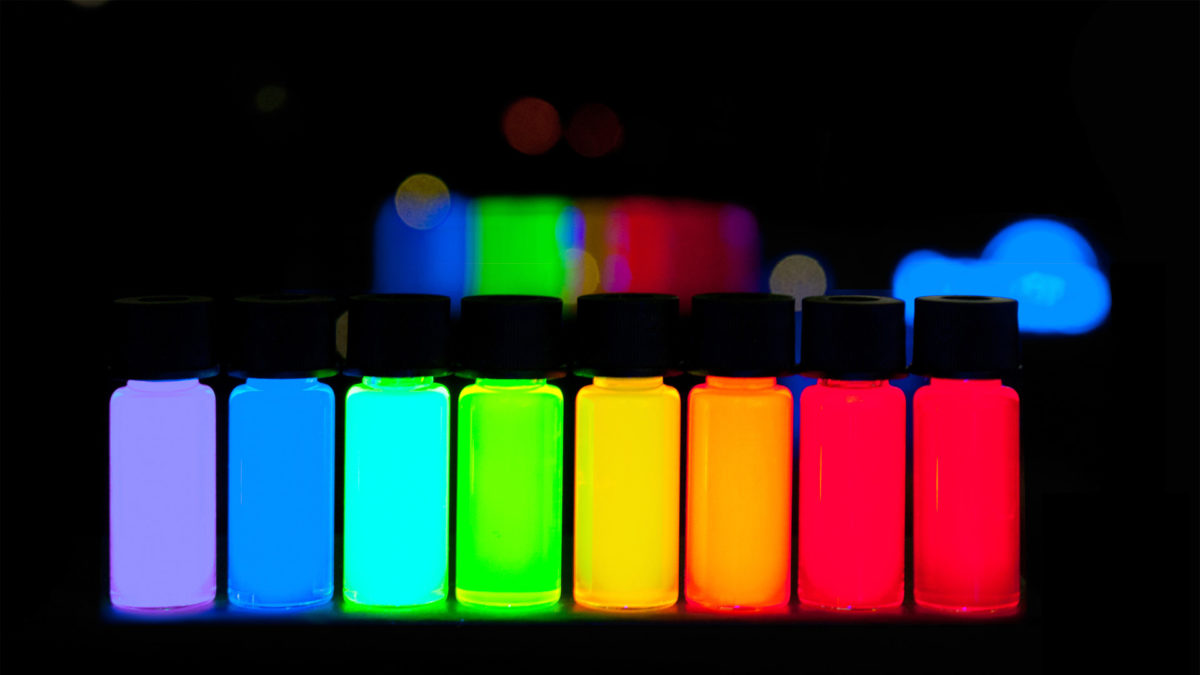Almost exactly one year ago, scientists at Australia’s University of Queensland demonstrated a quantum dot solar cell at 16.6% efficiency, an achievement that the director of the university’s nanomaterials center called “effectively the difference between quantum dot solar cell technology being an exciting ‘prospect’ and being commercially viable.”
This efficiency achievement, and the opening of realistic pathways to push beyond 20%, has led scientists to begin thinking about how this technology might look outside of a laboratory setting. Research into quantum dot solar cells (QDSCs) has expanded its focus to take in the many other factors that would affect the material’s performance in a commercial setting. Most QDSC materials that scientists work with could lend themselves quite easily to low-cost, high-volume production techniques. And the ability to easily tune materials to different bandgaps offers further opportunities in device design. Long-term stability, however, still poses challenges.
Degradation mechanisms
Quantum dot materials often oxidize and lose performance when exposed to ambient air, and are also variously sensitive to raised temperatures, moisture and other conditions they would be sure to face installed in an outdoor setting. Unwanted reactions with other cell layers and materials can also pose a problem for QDSC device designers.
A new paper from scientists at TU Dresden in Germany; Stability of Quantum Dot Solar Cells: A Matter of (Life)Time, published in Advanced Energy Materials, examines the stability issues and degradation mechanisms holding back three common classes of QD material.
The paper outlines degradation effects observed in earlier experiments for quantum dot materials based on lead chalcogenides and lead-halide perovskites, as well as lead-free quantum dots. For each material, they outline the major known stability issues, as well as the recent progress and potential solutions to them.
While each of the materials has its own intricacies, the group was able to draw broad conclusions about the stability issues affecting QDSCs. “All three share plenty commonalities in their fundamental causes for degradation. Ambient factors such as oxygen and water, but also increased temperatures or high intensities of illumination can decrease the lifetime of QDSCs,” they explain. “Beyond these external factors, both the intrinsic properties of QDs and their interplay with other materials present in the photovoltaic devices can also serve as causes of degradation.”
Popular content
Stability testing
The group’s key finding is that stability testing in QDSC’s has so far seen piecemeal development, with focus on different factors. “Unfortunately, the lack of a standardized method to assess stability of QDSCs limits the applicability of the results across the field,” the group explains. “To address this issue, we propose two simple stability tests (stress‐free and realistic) which we believe can increase the comparability, reliability, and reproducibility of results and encourage the scientific community to adopt them.”
Looking to the development of such standards in perovskite solar cells, which are somewhat further along the path to commercialization, the group encourages other QDSC researchers to adopt two standard sets of testing protocols: “stress-free” – where the device’s best efficiency is measured with an encapsulant, under an inert atmosphere at room temperature, and at open circuit bias with illumination only for the length of time needed for a current-voltage sweep.
A second set of tests is then recommended to evaluate the device under more “realistic” conditions. This would expose devices without encapsulant to a controlled humidity environment and temperatures up to 85 degrees Celsius, at maximum power point under continuous ‘one sun’ illumination.
“We hope future research focuses on a more profound analysis of the degradation mechanisms in QDSCs….,” the scientists conclude. “Such a detailed investigation—in combination with accurate characterization of the J–V characteristics evolution—would inevitably enhance the understanding of degradation mechanisms of QDSCs, and expedite the development of mitigation strategies.”
This content is protected by copyright and may not be reused. If you want to cooperate with us and would like to reuse some of our content, please contact: editors@pv-magazine.com.



Thanks for your information about news for renewables energy.You are the best.